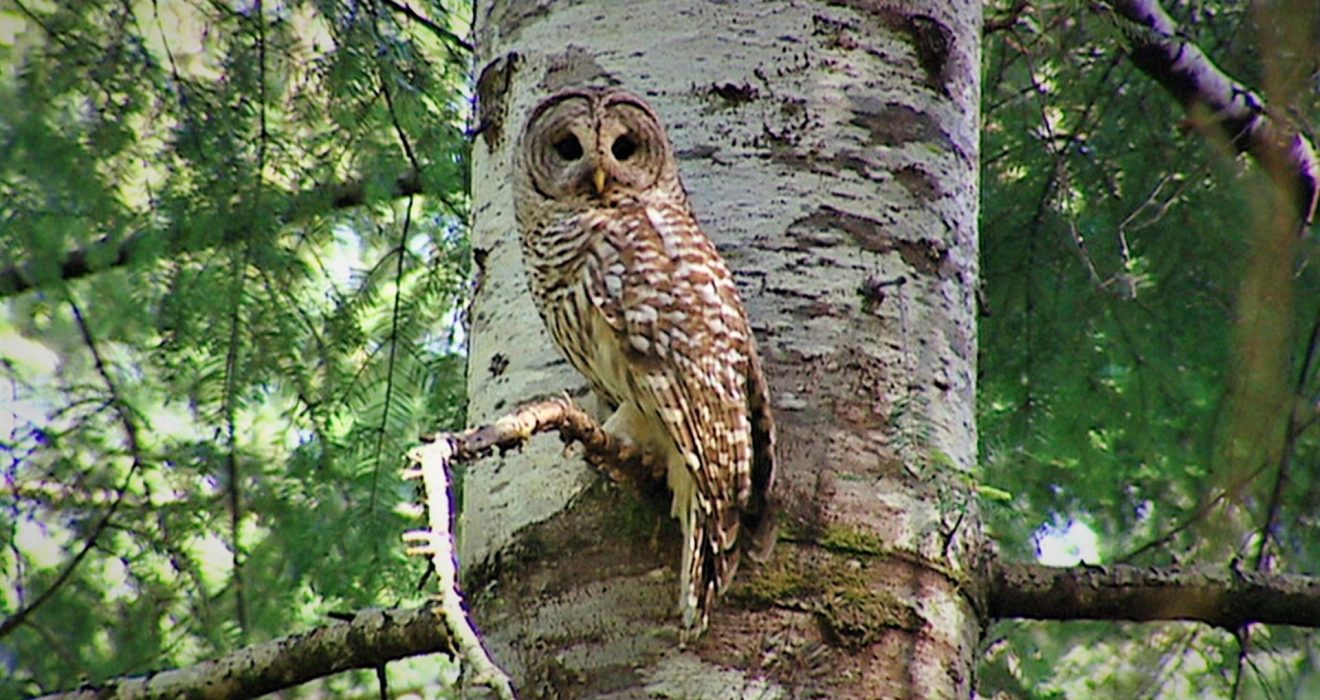In a bid to rescue the endangered spotted owl from extinction, the U.S. Fish and Wildlife Service (USFWS) is proposing a controversial strategy – the lethal removal of hundreds of thousands of barred owls. This drastic measure, aimed at correcting the imbalance caused by the non-native barred owl’s intrusion into West Coast forests, has ignited a fierce debate on the ethical and ecological implications of human intervention to save a species.
The Battle for Survival
The USFWS argues that the survival of the spotted owl, a close genetic relative native to the Pacific Northwest, is under severe threat due to the encroachment of barred owls. While an undiscriminating eye may struggle to distinguish between the two species, the barred owl’s larger size, quicker reproduction, aggressiveness, and less discerning habitat choices have led to a significant decline in spotted owl populations. The proposal calls for the lethal removal of over 470,000 barred owls over the next 30 years.
Human Influence and Environmental Fallout
The colonization of the Pacific Northwest by barred owls is intricately linked to human influence, notably the westward expansion of European settlers. This historical context underscores the complexities of ecological imbalances resulting from human activities. The current proposal to address the barred owl intrusion prompts profound questions about the ethical and practical dimensions of human intervention in rectifying such imbalances. Delving into the historical fallout of environmental decisions, it brings to the forefront the challenging task of mitigating the consequences of past ecological disruptions. Balancing the scales between conservation efforts and acknowledging the costs associated with correcting historical wrongs becomes a pivotal consideration in navigating the intricate relationship between human actions and environmental repercussions.
Barred Owl Scapegoat or Culprit?
The contentious proposal to lethally remove barred owls has sparked a debate over whether the species is a scapegoat or a genuine culprit. Critics, including Jennifer Best from Friends of Animals, contend that the targeted removal of a thriving species in its natural habitat is ethically questionable. Advocates for the barred owl emphasize the need for a more holistic strategy, underscoring the importance of safeguarding old-growth forests and engaging in habitat restoration initiatives. The argument pivots on the belief that addressing the broader ecological context and protecting vital habitats are paramount, steering away from the approach of singling out and eliminating a specific species. This perspective urges a more nuanced and comprehensive perspective in the ongoing efforts to preserve biodiversity and ecological balance.
The Extinction Dilemma
The proposed strategy of lethally removing barred owls underscores the urgency of the extinction dilemma faced by the spotted owl. The U.S. Fish and Wildlife Service (USFWS) argues that the immediate threat of extinction for the spotted owl in certain regions of Washington and Oregon necessitates swift and decisive action against the encroaching barred owl population. This ethical quandary highlights the challenging choices wildlife conservationists confront when attempting to preserve biodiversity. The extinction dilemma encapsulates the complexity of managing competing species and underscores the critical need for intervention to avert irreversible losses within fragile ecosystems, forcing a poignant examination of the trade-offs involved in ensuring the survival of one species while contending with the potential demise of another.
The Lethal Removal Strategy
The proposed management plan by the U.S. Fish and Wildlife Service (USFWS) adopts a contentious approach known as lethal removal. Trained crews utilize owl calls to attract barred owls, subsequently employing shotguns to eliminate them. Although an experimental study demonstrated some success in stabilizing spotted owl populations, apprehensions persist regarding the long-term efficacy of this strategy. The plan raises questions about the sustainability of the proposed solution and the potential necessity for perpetual management of the barred owl population. The debate surrounding the ethical implications and the ecological consequences of such a method adds complexity to the ongoing efforts to address the intricate interplay between different owl species in the West Coast forests.
Balancing Conservation and Compassion
The ethical implications of the proposed lethal removal have sparked opposition from animal rights groups. Friends of Animals challenged the USFWS’ permit for an experimental study in 2021, emphasizing the need to consider alternative approaches and the adaptability of species to different pressures, including threats like climate change.
Beyond Lethal Removal
Looking beyond the controversy, conservationists propose a more holistic approach. Protecting old-growth forests, addressing habitat destruction, and tackling the root causes of ecological imbalances are seen as long-term solutions. This approach aligns with the belief that the focus should be on habitat conservation rather than targeting a specific species.
Conclusion
As the public comment period for the USFWS proposal unfolds, the delicate balance between conservation efforts and ethical considerations remains a central theme. The fate of the spotted owl hangs in the balance, forcing a critical examination of the measures humanity is willing to take to correct past ecological wrongs. In the quest to Protect Endangered Species, the broader question emerges – how do we navigate the intricate web of ecological interdependence without compromising our ethical compass?

